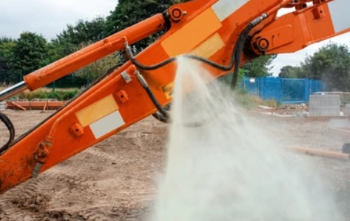Hydraulic systems are the lifeblood of many industrial applications, providing the force required to operate heavy machinery and perform essential tasks. At the heart of these systems lies the concept of hydraulic pressure, often measured in PSI (pounds per square inch).
In this article, we'll dive deep into the world of hydraulic pipe pressure, answering fundamental questions like "What PSI is hydraulic pipe?" and examining the significance of the minimum pressure requirement for hydraulic hoses.
What is Hydraulic Pressure?
Before we delve into the specifics, let's establish a foundational understanding of hydraulic pressure. In hydraulic systems, pressure is the force exerted on a fluid (usually hydraulic oil) within a confined space. This pressure is what enables hydraulic machinery to perform tasks like lifting, bending, and moving.
The Significance of PSI in Hydraulic Systems
PSI, or pounds per square inch, is the unit of measurement commonly used to quantify hydraulic pressure. It provides a standardized way to express the force being applied to the hydraulic fluid within the system. Understanding PSI is crucial for ensuring the safe and efficient operation of hydraulic equipment.
What PSI is Hydraulic Pipe?
Hydraulic pipes come in various sizes and are designed to withstand different levels of pressure. The PSI rating of a hydraulic pipe refers to the maximum pressure it can handle without bursting or failing. It's essential to select hydraulic pipes with PSI ratings that match the requirements of your specific hydraulic system.
Measuring Hydraulic Pressure
Accurately measuring hydraulic pressure is essential for system diagnostics and maintenance. Pressure gauges and transducers are commonly used tools for this purpose, providing real-time data on the pressure within the hydraulic system.
A. The PSI Formula
Calculating PSI is relatively straightforward. It is obtained by dividing the force applied (in pounds) by the area over which the force is distributed (in square inches). The formula is PSI = Force (in pounds) / Area (in square inches). This formula is foundational in comprehending hydraulic pressure.
B. Factors Influencing Hydraulic Pressure
Several factors influence hydraulic pressure, including the volume and viscosity of the hydraulic fluid, the size and length of the pipes, and the efficiency of the hydraulic pump. Understanding how these factors interplay is essential for maintaining optimal pressure levels within a hydraulic system.
Selecting the Right Hydraulic Hose
Selecting the right hydraulic hose is a critical decision. It involves considering factors like operating pressure, temperature range, and compatibility with hydraulic fluids. Choosing the wrong hose can result in leaks, hose failure, and costly downtime.
Troubleshooting and Monitoring Hydraulic Pressure
A. Identifying Pressure-related Issues
Monitoring hydraulic pressure is vital for identifying potential issues. Fluctuations or deviations from the optimal PSI levels can indicate a problem within the system. Recognizing these signs early allows for prompt troubleshooting and prevents extensive damage to the system.
B. Monitoring PSI for System Health
Regular monitoring of PSI is a proactive approach to ensure the health and longevity of hydraulic systems. Advanced monitoring systems and sensors enable real-time data collection, providing insights into system performance. This data helps in timely maintenance and adjustments to maintain optimal pressure levels.
FAQ Section
Q1: What is the PSI rating of a typical hydraulic pipe?
A1: The PSI rating of a hydraulic pipe can vary widely depending on its size and intended application. Common PSI ratings range from 1,000 PSI to 6,000 PSI and beyond.
Q2: Why is it important to operate hydraulic hoses within their specified pressure range?
A2: Operating hydraulic hoses within their specified pressure range ensures optimal performance and minimizes the risk of hose failure or leaks.
Q3: How can I measure hydraulic pressure in my system?
A3: Hydraulic pressure can be measured using pressure gauges or transducers designed for hydraulic applications.
Q4: What factors should I consider when selecting a hydraulic hose?
A4: When selecting a hydraulic hose, consider factors such as operating pressure, temperature range, compatibility with hydraulic fluids, and the specific requirements of your hydraulic system.
Q5: Are there industry standards for hydraulic pipe pressure ratings?
A5: Yes, there are industry standards and regulations that specify the performance requirements and pressure ratings for hydraulic pipes and hoses.
Final Thought on Hydraulic Pipe Pressure
In conclusion, hydraulic pipe pressure, measured in PSI, is a fundamental aspect of hydraulic systems. It determines the force that can be exerted to perform work, making it essential for a wide range of applications. Whether you're operating hydraulic equipment or designing hydraulic systems, a clear understanding of PSI and minimum pressure requirements is vital.
Post time: Oct-18-2023


